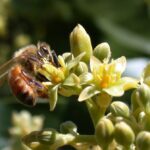Avocado cultivation faces a variety of pests and diseases that can seriously affect tree health and fruit quality. Proper and preventive management is essential to maintain productivity and ensure a high-quality harvest. Below are the main pests and diseases that affect avocados, along with possible solutions for their control.
Main Pests Affecting Avocados
Pests are one of the biggest challenges in avocado cultivation. They can damage both leaves and fruits and, in some cases, compromise the overall health of the tree.
Seed Borer (Heilipus lauri)
The seed borer is one of the most destructive pests for avocados, especially in regions like Mexico and Central America. The larvae of this insect bore into the avocado seed, causing direct damage to the fruit and significantly reducing its commercial value.

Solution:
- Cultural Management: Collect and destroy fallen or damaged fruits to reduce the pest population.
- Chemical Control: Apply specific insecticides during the egg-laying period to reduce infestation.
- Biological Control: Release natural enemies such as parasitoids that attack the seed borer larvae.
Red Spider Mite (Oligonychus perseae)
The red spider mite is a common pest in warm and dry climates. It feeds on leaf sap, causing discoloration, necrosis, and, in severe infestations, defoliation.
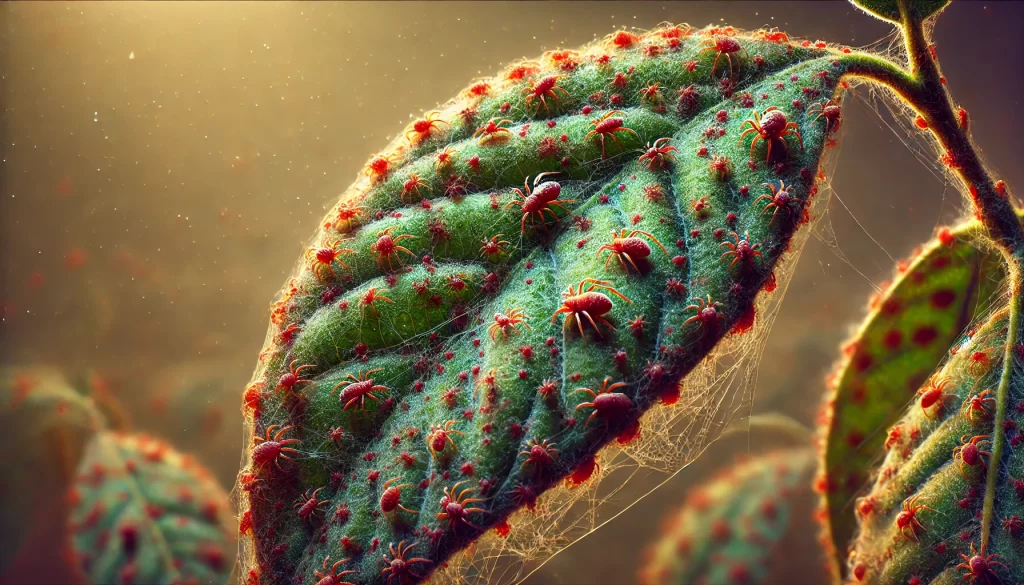
Solution:
- Cultural Management: Ensure adequate irrigation and maintain soil moisture to prevent favorable conditions for the red spider mite.
- Chemical Control: Use specific acaricides when high populations are detected.
- Biological Control: Introduce predatory mites that feed on the red spider mite.
Thrips (Scirtothrips perseae)
Thrips are small insects that damage avocado leaves and fruits by sucking their sap. This causes scars and deformations on the fruits, affecting their quality.
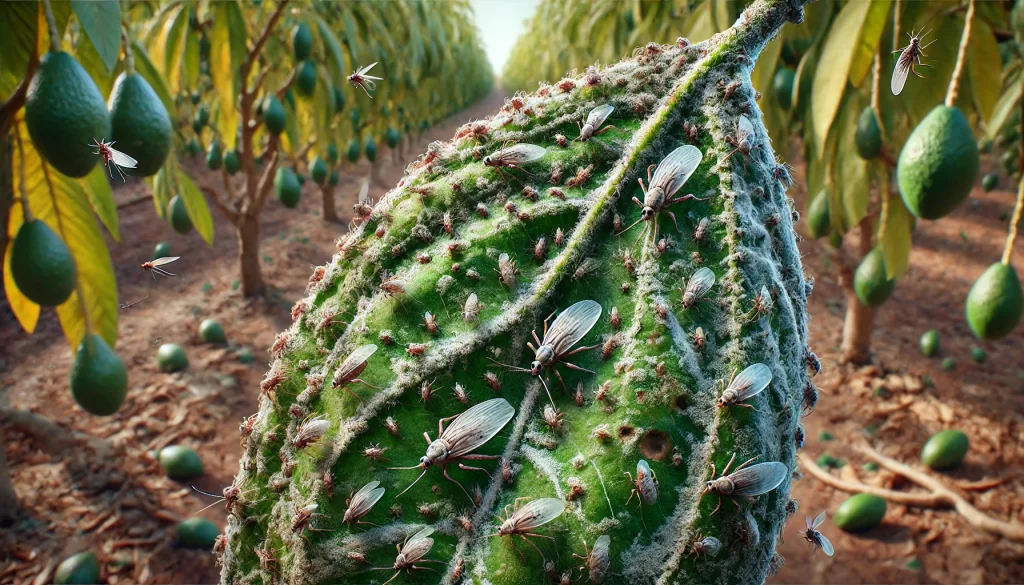
Solution:
- Cultural Management: Prune affected branches to reduce thrips breeding areas.
- Chemical Control: Apply selective insecticides at critical stages of crop development.
- Biological Control: Use natural predators such as lacewings and predatory mites.
Main Diseases in Avocado Cultivation
Avocado diseases caused by fungi, bacteria, and viruses can seriously affect tree health and fruit production.
Root Rot by Phytophthora (Phytophthora cinnamomi)
Root rot is one of the most devastating diseases of avocados. It is caused by a fungus that attacks the tree’s roots, causing leaf yellowing, defoliation, and, in severe cases, tree death.

Solution:
- Cultural Management: Avoid waterlogging and improve drainage to reduce favorable conditions for the fungus.
- Use of Resistant Rootstocks: Graft susceptible varieties onto rootstocks resistant to Phytophthora.
- Chemical Control: Apply systemic fungicides and phosphites to prevent and control the disease.
Anthracnose (Colletotrichum gloeosporioides)
Anthracnose is a fungal disease that mainly affects avocado fruits, causing black spots, rot, and premature fruit drop. It can also attack leaves and young branches.
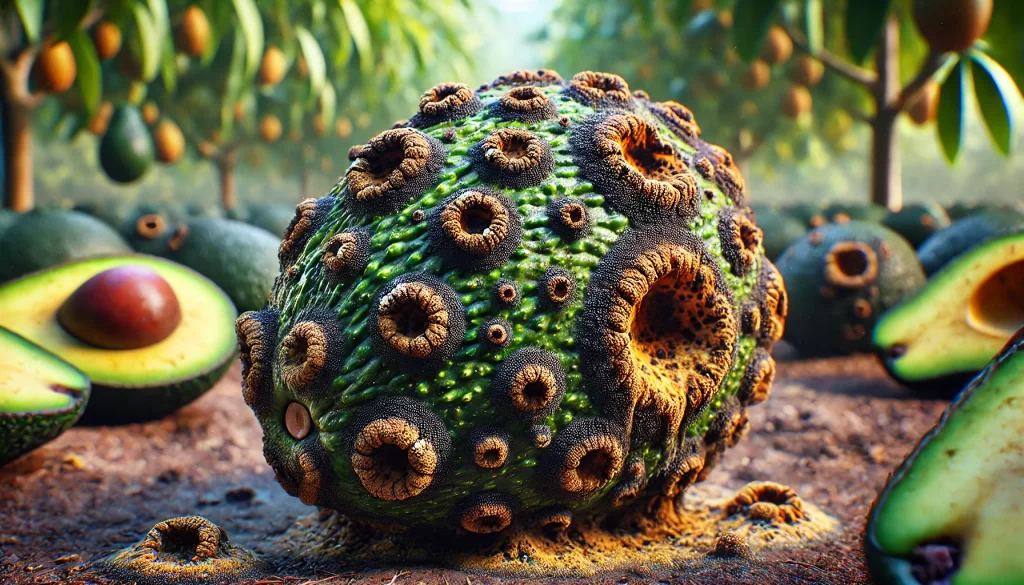
Solution:
- Cultural Management: Prune and remove infected branches and fallen fruits to reduce the inoculum source.
- Chemical Control: Apply preventive fungicides during flowering and fruit development stages.
- Biological Control: Use Bacillus subtilis-based biofungicides to reduce disease incidence.
Sun Blotch
This disease causes necrotic spots on leaves and fruits exposed to the sun, affecting avocado quality. Although not caused by pathogens, its management is important to maintain fruit quality.

Solution:
- Cultural Management: Maintain adequate foliar cover to protect fruits from direct sunlight.
- Use of Sunscreens: Apply kaolin or calcium carbonate-based products to exposed fruits to reduce sun damage.
Integrated Pest and Disease Management (IPM) Strategies
Integrated Pest Management (IPM) is an effective strategy that combines cultural, biological, and chemical methods to control pests and diseases sustainably.
Monitoring and Diagnostics: Constant orchard monitoring is essential for early detection of pests and diseases. This includes regular visual inspection, the use of monitoring traps, and laboratory analysis when necessary.
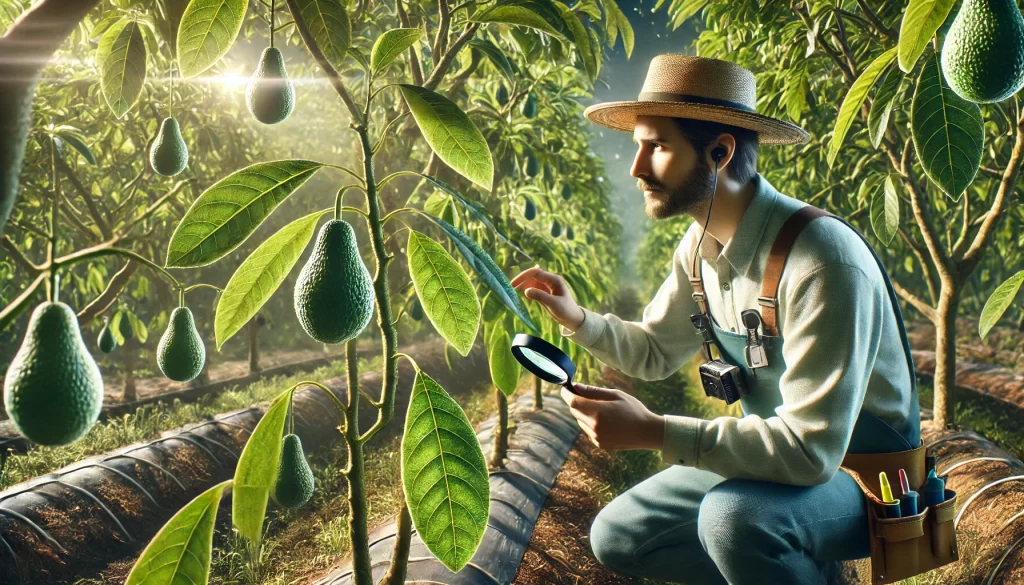
Crop Rotation and Use of Cover Crops: Crop rotation and the use of cover crops can reduce pest incidence and improve soil health, creating a less favorable environment for disease development.
Biological Control: The use of natural enemies and biofungicides is a key strategy in IPM. Introducing beneficial insects and applying biological products helps maintain balance in the orchard ecosystem.
Rational Pesticide Application: When pesticides are needed, it is important to use specific products and apply them in a targeted manner to minimize impact on the environment and beneficial insects.
 AgronoBlog – Agriculture Blog
AgronoBlog – Agriculture Blog 